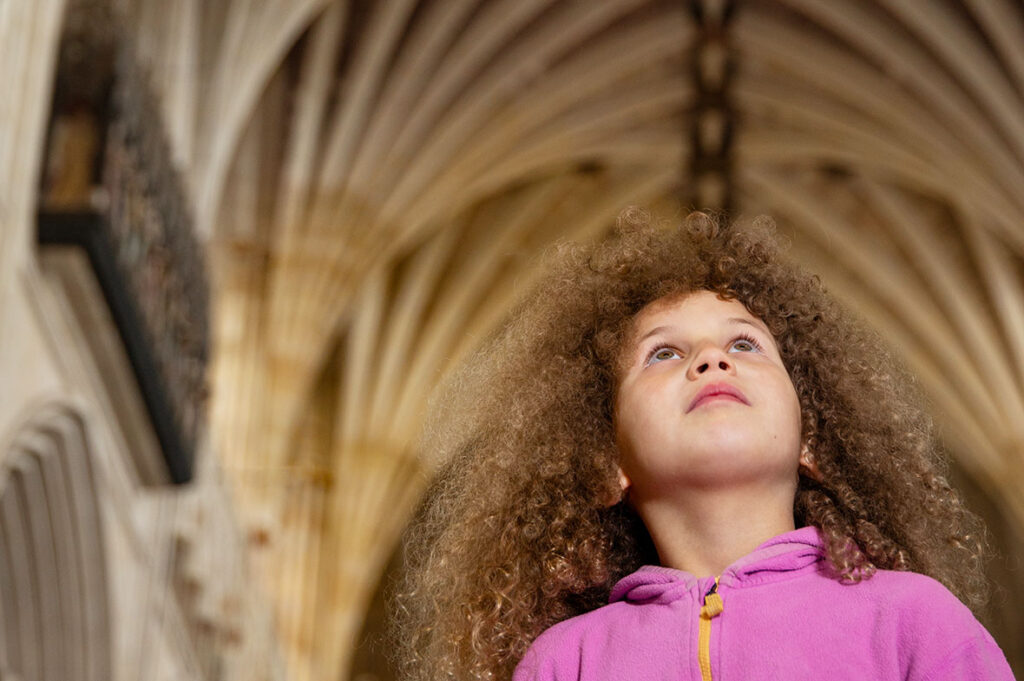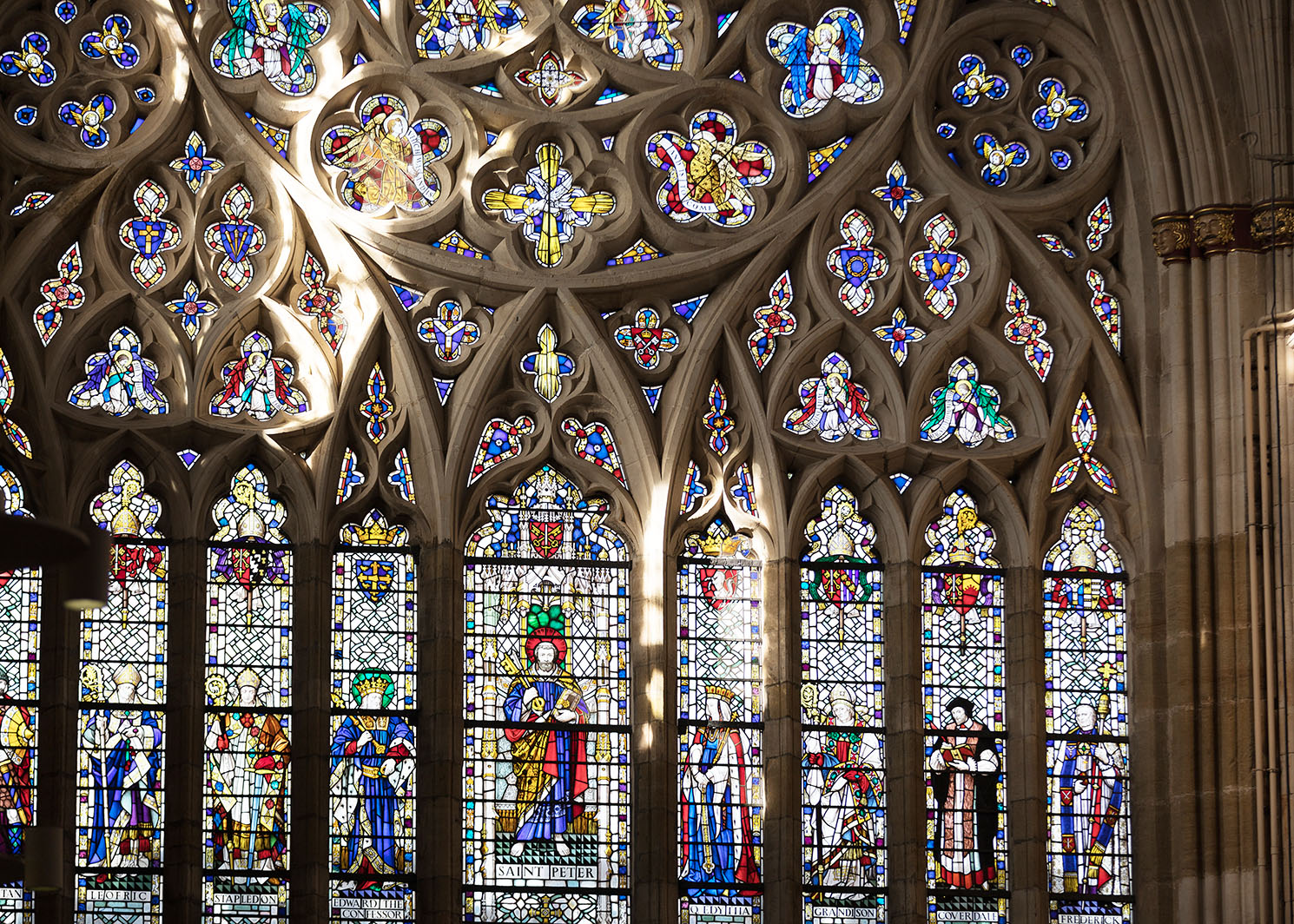RE Visits
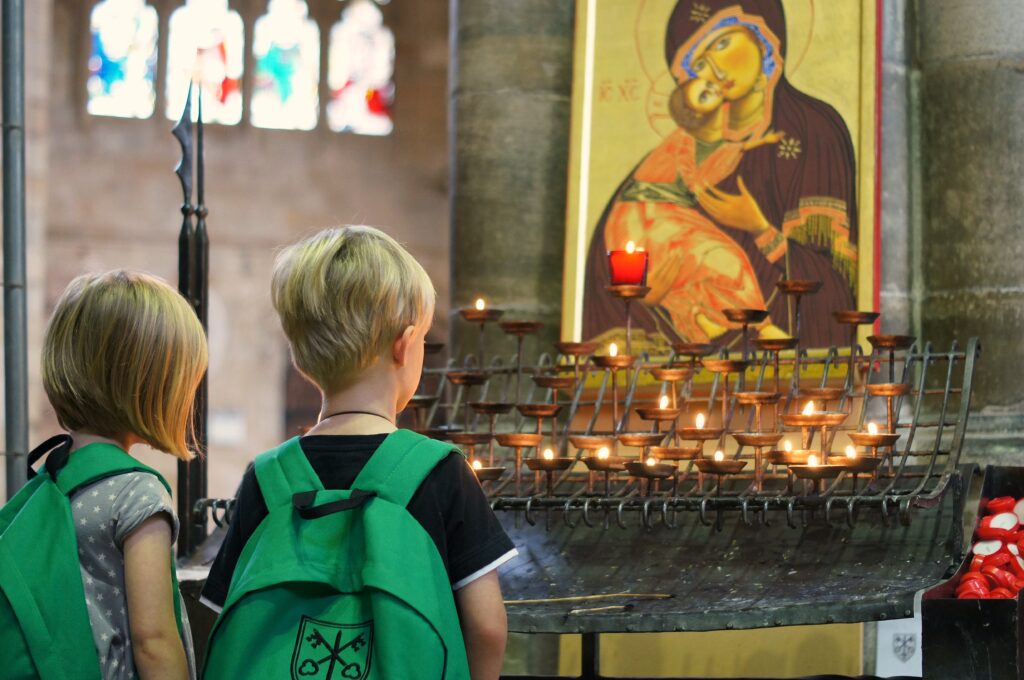
Cathedral – A Special Place
Suitable for: KS1, KS2, KS3
Duration: Options for two hours or four hours
Cost per Pupil: £3 Half Day (two hours)
or £7 Full Day (four hours)
This is a guided tour around the Cathedral that explores the building as a place of worship. Using artefacts and costumes, pupils will discover why the Cathedral is a special place, and gain a deeper understanding of the Christian faith. Our guides will point out recognisable Christian symbols, their meaning and explain why they are used.
- Explore the atmospheric space that has been standing for almost 1000 years and find out about the special furniture used in churches.
- Find out about the special events and celebrations throughout the Church year and how religion to the people from the past has evolved to modern day worship.
- Light a group candle and reflect upon the visit at the end of the tour as people have centuries before you
Links: History, RE
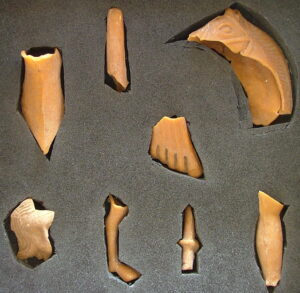
Pilgrimage
Suitable for: KS1, KS2, KS3 (Popular for Year 3 and 4)
Duration: Options for two hours or four hours
Cost per Pupil: £3 Half Day (two hours)
or £7 Full Day (four hours)
What evidence does the Cathedral have that Pilgrims once stopped here on their holy quest? We will tell you of the discoveries that came about during the Second World War and how a small wax lady was discovered and the significance behind her. Students will learn more about the type of medieval pilgrim who would have visited Exeter and understand the importance of pilgrimage – why it is taken, by whom and what the journey entailed.
- Pupils can see Bishop Lacy’s tomb, whose importance will be revealed
- A chance to reflect upon life as a journey and how many religions endorse pilgrimage for religious enlightenment
Links: History, RE, PSHE
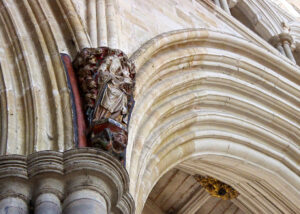 The Reformation (16th Century changes to the life and fabric of Exeter Cathedral)
The Reformation (16th Century changes to the life and fabric of Exeter Cathedral)
Suitable for: KS3 & KS4
Duration: Flexible but typically 60 minutes
Cost per Pupil: £3
This tour is linked to the development of Church, state, and society in Britain 1509-1745 on the Key Stage 3 History National Curriculum.
The 16th century Reformation caused the greatest ever upheaval in the life and fabric of Exeter Cathedral. Begun under the reign of King Henry VIII, the break with Rome led to a complete rethinking of the way people related to God, the Bible, and the Church itself. Take a closer look at some of the damage inflicted at that time and learn how the lives of the Cathedral, and its inhabitants, were changed forever.
Links: History, Art, PSHE, RE/RSE/SMSC – we are happy to make sure your relevant theme requirements are covered, just let us know what they are.
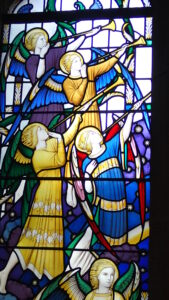 Art in the Cathedral
Art in the Cathedral
Suitable for: KS1, KS2, KS3 & KS4
Duration: Options for two hours or four hours
Cost per Pupil: £3 Half Day (two hours)
or £7 Full Day (four hours)
The tour will take you on a guided trail around the Cathedral where students will be encouraged to observe and respond to a variety of materials and artefacts and decorations. These might be in the form of carvings, objects, paintings, patterns, textiles and designs. There are many cathedral artisans working together to adorn this lovely building – stonemasons, glaziers, tapisers, florist and artists. We will be exploring the value of art in a sacred space and what is planned for future displays.
- Explore how decorative art forms help Christians to pray and worship.
- Find out what is the relevance of the Icon and how it is made.
- Look at the images depicted in the stained glass windows. How do they tell or story, how can we work out who made them or how old they are?
- Explore important furnishings such as the lectern, altar, pulpit, Bishops Throne, and tombs.
Links: Art, History, PSHE/RE/RSE/SMSC
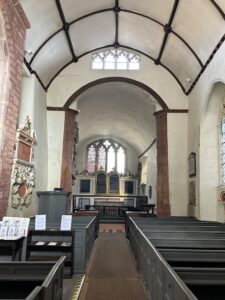 Sacred Places (Comparing a Cathedral to a Church) – Joint Tour of Exeter Cathedral and St Martin’s Church
Sacred Places (Comparing a Cathedral to a Church) – Joint Tour of Exeter Cathedral and St Martin’s Church
Suitable for: KS1, KS2, KS3 & SEND
Duration: Flexible but typically two hours (45 minutes at each venue and time allowed for questions).
Cost per Pupil: £5 – price includes a donation to the charity The Churches Conservation Trust for the use of St Martin’s Church.
A unique opportunity to visit both Exeter Cathedral and the nearby Saxon church of St Martin’s. Pupils will begin at St Martin’s Church and then be taken across the Green to Exeter Cathedral to discover the differences between a church and a cathedral.
The lesson aligns with the Devon and Torbay Agreed Syllabus for RE: Unit 1.8 What makes some places sacred to believers? And can also be adapted for older groups to cover What links Christianity, Judaism and Muslim Beliefs? Students will explore visual stimuli such as 17th Century reredos and stained-glass windows displaying prophets such as Moses and Amos. The lesson also aligns with the Devon and Torbay Agreed Syllabus for RE: Upper KS2 Unit U2.8 What does it mean to be a Muslim in Britain today?, KS3 Unit 3.6 Why do Christians believe Jesus was God on earth? and KS3 Unit 3.4 Does the world need prophets today?
- Recognise that there are special places where people go to worship.
- Identify at least three objects used in worship.
- Explore through visual stimuli; the pulpit, altar and font.
- See both St Martin’s Church and Exeter Cathedral.
- Find out the similarities and differences between a church and a cathedral.
Links: RE/RSE/SMSC
Please note that this tour requires a minimum of 15 pupils and has a maximum of 60.
A lunch space will be provided free of charge on request and bag storage and facilities can be used at the Cathedral. The tour can also include use of a designated quiet space to avoid sensory overload.
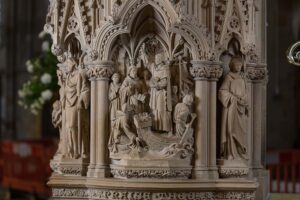
What does it mean to be a martyr?
A teacher’s pack for self-led visits with resources
Suitable for: KS2 & KS3
Duration: Flexible but typically 90 minutes
Cost per Pupil: £2.50 with educational resources. Half Day (two hours)
The Cathedral has a pulpit dedicated to martyrs called the Martyrs’ Pulpit, which features carvings of St Boniface, St Stephen, St John the Baptist, St Paul, St Alban, and Bishop John Patterson. Our five-page printed resource is perfect for non-specialist RE leads as it is full of information, key questions, and activities to keep your pupils busy during your visit. A digital copy can be sent to lead teachers in advance of the visit and printed copies, as well as clipboards and pens/pencils, are provided as part of your self-led visit.
The resource is mapped to the new 2024 Devon and Torbay Agreed RE Syllabus Upper KS2, Unit U2.5 What do Christians believe Jesus did to ‘save’ people? [Salvation]
Links: RE
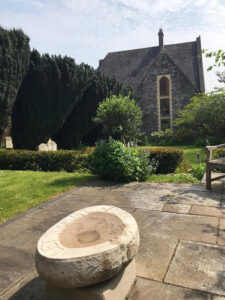
Exeter Quaker’s Meeting House
Suitable for: KS1, KS2, KS3, KS4 & 5 (A-Level / Sixth Form)
Cost per Pupil: £7
Make the most of your day by visiting us and one of our local partners. Pupils will walk the nine minutes from the Cathedral Green to the Quakers Meeting House. Quakerism started in England in the second half of the 17th century, during the aftermath of the English Civil War.
In a school visit students and teachers will be able to:
Experience two and a half minutes of Quaker stillness.
Contrast this with other places of worship and compare it to the use of sacraments, music, and dress code that the cathedral practices.
Hear from a few Quakers who are trying to live with Simplicity, Truth, Equality, Peace, and Sustainability.
Decide, using evidence, whether Quakers “Let our lives speak.”
After lunch, take a tour around Exeter Cathedral, on a curriculum linked theme of your choice, with one of our knowledgeable guides.
This joint tour is linked to The Devon and Torbay Agreed RE Syllabus KS1 Unit: 1.10 What does it mean to belong to a faith community? Lower KS2 Unit L2.6 For Christians, what was the impact of Pentecost? [Kingdom of God] & KS3 Unit 3.6 Why do Christians believe Jesus was God on earth? [Incarnation]. GCSE groups are also welcome, and more specialist talks can be arranged with suitable notice.
Class groups of 30+ are split into smaller groups. You can book for up to 90 pupils per day on this tour package, with a minimum of 10. Maximum capacity at The Meeting House of 45 at one time.
Duration:
90 minutes at The Quakers Meeting House 10:30am – 12pm
Lunch 12pm – 12:45pm (either on the Cathedral Green, in our Cloister Gardens, or at The Meeting House, where pupils are welcome to eat lunch outside in the Peace Garden or in the Meeting Room itself.
Then approx. 90 minutes at the Cathedral, or until you need to leave to get back to school.
Accessibility at The Quakers Meeting House:
The Meeting House has a ramp to the front door, lobby, main meeting room, disabled toilet, kitchen, and library. There is no lift to the first floor, basement, or Peace Garden.
There are 6 toilets. Two on the ground floor, one of which is a disabled toilet, three in the basement and one on the first floor.

